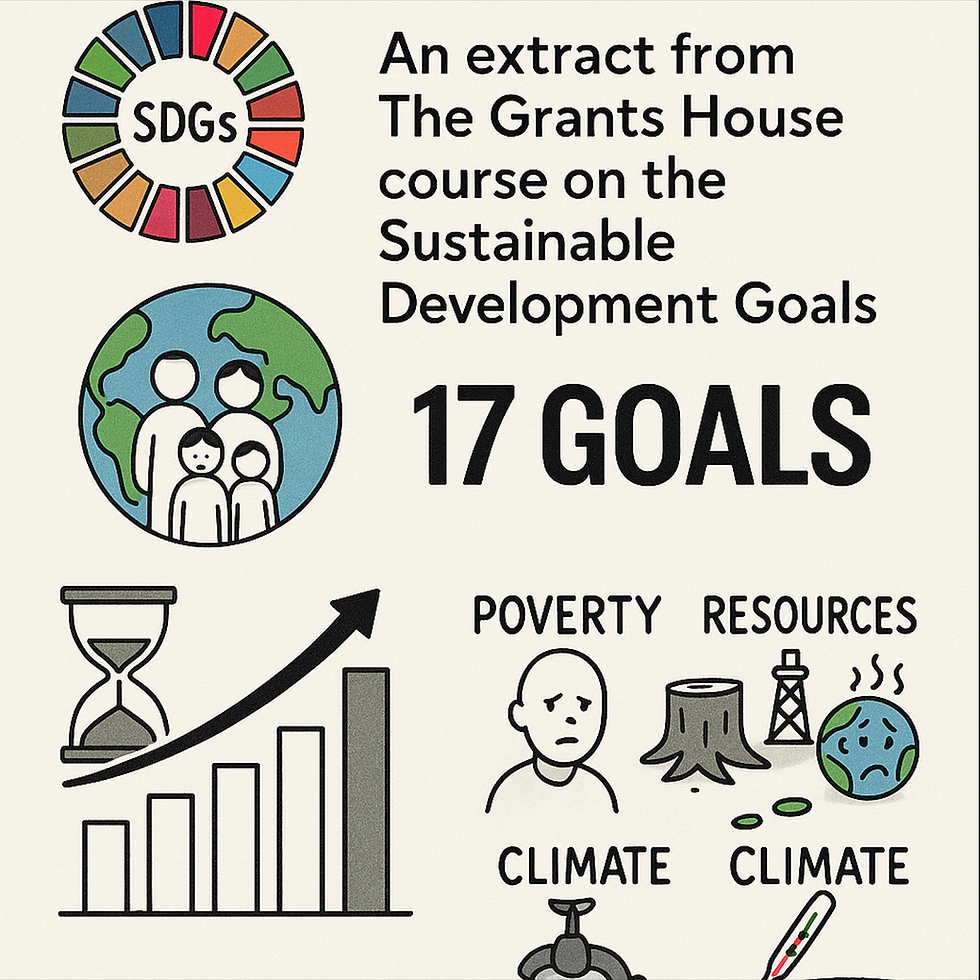What is a "Sticky Grant?"
- Philip

- Jun 2
- 3 min read
Strategies for Repeat Funding
When most nonprofits win a grant, the champagne corks fly — and rightly so. It is no small feat to secure a donor’s trust, especially in a competitive funding landscape. But what happens after that first “yes”?

Too often, organizations view grants as one-time windfalls rather than the beginning of a relationship. In reality, the most successful nonprofits are not only skilled at writing proposals; they are even better at keeping their funders engaged.
Welcome to the art of the “Sticky” Grant.
What Is a “Sticky” Grant?
A sticky grant is one that endures. It leads to renewal, additional funding, or even unsolicited invitations to apply again. These grants deepen a donor’s confidence and interest over time, making your organization both easy and appealing to support.
Sticky grants are built on trust, strategic alignment, and proactive engagement. They are entirely achievable with the right approach.
Five Strategies to Make Your Grants Stick

1. Flawless Execution and Visible Results
Deliver exactly what you promised, on time and within budget. Then go one step further.
Ensure your results are not just recorded, but also communicated effectively. Reports should not be treated as administrative tasks. They should tell a story — with data, outcomes, and human impact. Include compelling visuals, quotes from beneficiaries, or a short narrative that reinforces the value of the project.
Tip: Visual reporting such as charts, infographics, and brief video clips can make your data more engaging and memorable.

2. Proactive Relationship Management
Think of your donor as a long-term partner, not merely a source of funding. Maintain communication from the moment you are approved and throughout the project cycle - in other words "between reporting deadlines." Share brief updates when milestones are achieved. Be transparent about challenges and proactive in discussing how you are addressing them.
Example: “Hi Julia, just a quick note to let you know we reached 800 youth this quarter, doubling our initial goal. I would be happy to share more in our next conversation.”
Regular, informal touchpoints like this help build trust and keep your organization top of mind.

3. Strategic Alignment and Adaptability
Donors change their approaches sometimes, and your approach should reflect that. A sticky relationship depends on remaining aligned with a funder’s evolving strategy.
Pay attention to public updates, newsletters, and shifts in funding priorities. Reference these changes, when appropriate, in your reports or renewal proposals. Show that your organization understands the broader picture and is evolving alongside the donor.
Suggestion: In your final report, include a short reflection on how your project supports or complements the donor’s future direction.
4. Continuity and Institutional Memory
Frequent staff changes can weaken donor relationships. Keep detailed internal records of communication history, preferences, and feedback. Ensure that whoever takes over a donor relationship can pick up where the last person left off.
Consistency in your organization’s messaging, branding, and tone also plays an important role. Familiarity builds trust.

5. Show What Comes Next
Do not wait until a project is complete to talk about the future. Use your midterm or final reports to introduce what is possible with continued support.
Articulate how the current project could be scaled, refined, or extended. Invite your donor to be part of the next chapter.
Case Snapshot: When Stickiness Pays Off
One small nonprofit secured a modest twelve-month grant from a private foundation. By the second report, they had already shared behind-the-scenes photos, a short video from the field, and an honest reflection on early lessons learned.
In their final report, they included a one-page proposal for an expanded version of the project, complete with timelines and a budget outline. That initiative earned them a three-year renewal and an invitation to present at the foundation’s annual forum.
What made the difference? It was not perfect execution — it was thoughtful engagement and forward planning.
Is Your Grant Sticky? A Quick Checklist

Final Thought
Winning a grant is only the first step. The true goal is to build a relationship that continues. When you treat each grant as the beginning of a dialogue rather than a one-off transaction, you lay the groundwork for long-term partnership.
If you would like support designing a strategy to retain funders and increase renewals, The Grants House would be glad to help.
Visit The Grants House to learn more.






Comments